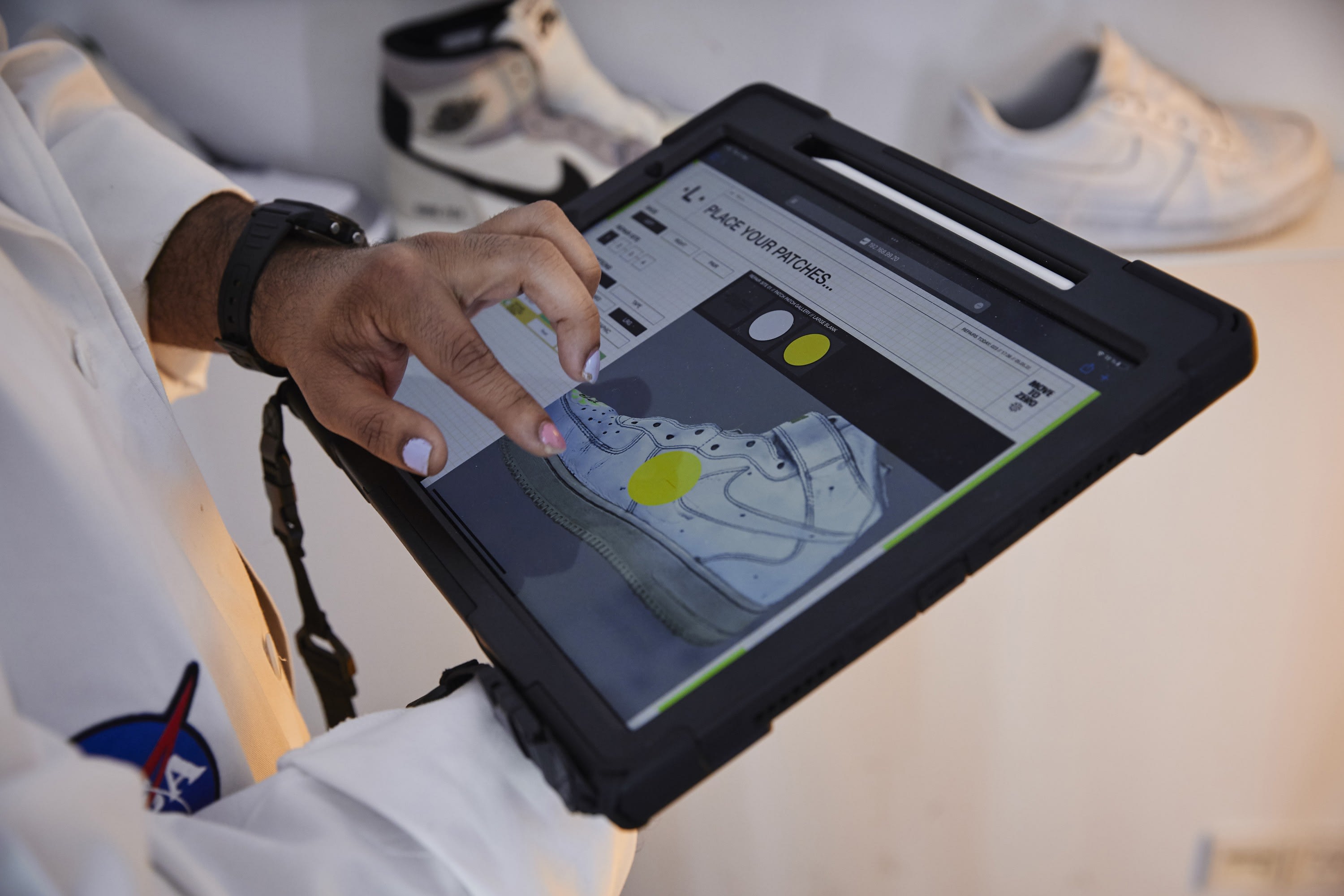Exploring The Limitations Of Robots In Nike Shoe Production

Table of Contents
Dexterity and Precision Challenges
Robots struggle with tasks requiring fine motor skills and adaptability, presenting significant hurdles in Nike's shoe manufacturing process. This limitation is particularly evident in two key areas: complex stitching and assembly, and quality control.
Complex Stitching and Assembly
Many shoe components necessitate intricate stitching and assembly that current robotic technology finds difficult to replicate with the speed and precision of human hands. The human touch remains crucial due to several factors:
- Variations in material texture and thickness: Robotic systems often struggle to adapt to variations in the thickness and texture of materials like leather, synthetics, and textiles, leading to inconsistencies in stitching and assembly.
- Precise placement of adhesives and other materials: Applying adhesives, insoles, and other components requires a level of precision and dexterity that current robots often lack. Inaccurate placement can compromise the shoe's structure and comfort.
- Handling delicate components without damage: Robots can inadvertently damage delicate materials during assembly if they lack the sensitivity and adaptability of human hands.
- Adapting to variations in shoe designs: Nike constantly innovates with new designs and materials, requiring robots to be reprogrammed frequently, a costly and time-consuming process. Humans are far more adaptable to these changes.
Quality Control and Defect Detection
While robots can perform some basic quality checks, such as verifying the presence of all components, subtle defects often require the discerning eye and tactile sense of a human inspector. This is because:
- Identifying inconsistencies in stitching: Minor inconsistencies in stitching, which might be imperceptible to a machine, can significantly impact the shoe's durability and aesthetics.
- Detecting minor imperfections in materials: Humans can identify subtle imperfections in materials, such as small tears or discoloration, which robots might miss.
- Assessing overall shoe comfort and fit (subjective qualities): Comfort and fit are subjective qualities that require human assessment. Robots currently lack the ability to evaluate these crucial aspects of shoe quality.
Cost and Implementation Barriers
The high initial investment and ongoing maintenance costs of advanced robotics can be prohibitive, especially when considering the complex nature of shoe production. This presents two major challenges: return on investment and integration with existing infrastructure.
Return on Investment (ROI)
The ROI on robotic systems in shoe manufacturing can be slow, particularly for tasks that require significant reprogramming for different shoe models. This is due to several factors:
- High initial purchase price of robots: Advanced robotic systems capable of performing complex tasks are extremely expensive.
- Cost of programming and maintenance: Programming and maintaining these robots requires specialized expertise, adding to the overall cost.
- Potential downtime and repair costs: Robotic systems are prone to occasional downtime for maintenance and repairs, impacting production efficiency.
- Need for specialized workforce to operate and maintain robots: Companies need to invest in training specialized personnel to operate and maintain these complex systems.
Integration with Existing Infrastructure
Adapting existing factory layouts and workflows to accommodate robots can be a complex and costly undertaking. This involves:
- Re-engineering production lines: Production lines often need significant modification to integrate robotic systems seamlessly.
- Retraining existing workforce: Workers may need retraining to operate and maintain robotic systems alongside their traditional roles.
- Potential disruption to existing production processes: The integration of robots can disrupt existing production workflows, potentially leading to temporary inefficiencies.
The Irreplaceable Human Element
Certain aspects of shoe production, such as design innovation, creative problem-solving, and adapting to unforeseen challenges, remain uniquely human capabilities. This highlights the crucial role of human workers even in increasingly automated factories.
Creativity and Innovation
Robots excel at repetitive tasks, but human designers are essential for creating innovative shoe designs and adapting to evolving consumer preferences. Humans are crucial for:
- Conceptualizing new shoe designs: The creative process of designing new shoe models requires human imagination and intuition.
- Responding to changing market trends: Human designers can quickly adapt to shifting consumer demands and market trends.
- Problem-solving during production challenges: Human ingenuity is essential for solving unexpected problems that may arise during the manufacturing process.
Adaptability and Problem-Solving
Unexpected problems or variations in materials require human ingenuity and adaptability, skills not yet fully replicated by robots. Human workers are invaluable for:
- Troubleshooting production issues: Humans can quickly identify and resolve unexpected problems that might halt the production line.
- Adapting to material inconsistencies: Humans can adapt to variations in materials and adjust their techniques accordingly.
- Making quick decisions based on real-time feedback: Humans can make quick decisions based on real-time feedback from the production line, ensuring smooth operation.
Conclusion
While the use of robots in Nike shoe production is increasing and offers benefits in certain areas, this article highlights significant limitations. The dexterity required for complex assembly, the high cost of implementation, and the irreplaceable human element in design and problem-solving demonstrate that complete automation remains a distant prospect. Further advancements in robotics and AI are needed to overcome these challenges before we see a fully automated Nike shoe factory. Therefore, a balanced approach that integrates both human skill and robotic automation is likely to remain optimal for maximizing efficiency and quality in robots in Nike shoe production for the foreseeable future. Consider the unique strengths of both human workers and robotic systems when planning your next manufacturing strategy for footwear production.

Featured Posts
-
 Analyzing The Potential Of A Joint Swedish Finnish Military Force
Apr 22, 2025
Analyzing The Potential Of A Joint Swedish Finnish Military Force
Apr 22, 2025 -
 Trump Administration Threatens Harvard With 1 Billion Funding Loss
Apr 22, 2025
Trump Administration Threatens Harvard With 1 Billion Funding Loss
Apr 22, 2025 -
 Hegseths Signal Chat Leaks Military Plans Shared With Family
Apr 22, 2025
Hegseths Signal Chat Leaks Military Plans Shared With Family
Apr 22, 2025 -
 Secret Service Closes Investigation Into White House Cocaine Discovery
Apr 22, 2025
Secret Service Closes Investigation Into White House Cocaine Discovery
Apr 22, 2025 -
 Strained Ties Examining The Growing Rift Between The United States And China
Apr 22, 2025
Strained Ties Examining The Growing Rift Between The United States And China
Apr 22, 2025
